Searching for "social learning"
digital storytelling across the curriculum
Bernard, R. (2015). The effective uses of digital storytelling as a teaching and learning tool. In: Flood, J., Heath, S. B., & Lapp, D. (Eds).
Handbook of Research on Teaching Literacy Through the Communicative and Visual Arts, Volume II: A Project of the International Reading Association. Routledge.
https://books.google.com/books?hl=en&lr=&id=cIx4CAAAQBAJ&oi=fnd&pg=PA429&dq=digital+storytelling+across+the+curriculum&ots=KpqFoWGQmm&sig=ZQJZkqfn_uE-2L4tqpBmVEiafXo#v=onepage&q=digital%20storytelling%20across%20the%20curriculum&f=false
Sessoms, D. (2008). DIGITAL STORYTELLING: Training Pre-service Teachers to Use Digital Storytelling Across the Curriculum. In K. McFerrin, R. Weber, R. Carlsen & D. Willis (Eds.), Proceedings of Society for Information Technology & Teacher Education International Conference 2008 (pp. 958-960). Chesapeake, VA: Association for the Advancement of Computing in Education (AACE). http://www.editlib.org/p/27300/
Yuksel, P., Robin, B. & McNeil, S. (2011). Educational Uses of Digital Storytelling all around the World. In M. Koehler & P. Mishra (Eds.), Proceedings of Society for Information Technology & Teacher Education International Conference 2011 (pp. 1264-1271). Chesapeake, VA: Association for the Advancement of Computing in Education (AACE). http://www.editlib.org/p/36461/
Ohler, J. (2008). Digital storytelling in the classroom : new media pathways to literacy, learning, and creativity /. Corwin Press.
Rudnicki, A., Cozart, A., Ganesh, A., Markello, C., Marsh, S., McNeil, S., Mullins, H., Odle Smith, D. & Robin, B. (2006). The Buzz Continues…The Diffusion of Digital Storytelling across disciplines and colleges at the University of Houston. In C. Crawford, R. Carlsen, K. McFerrin, J. Price, R. Weber & D. Willis (Eds.), Proceedings of Society for Information Technology & Teacher Education International Conference 2006 (pp. 717-723). Chesapeake, VA: Association for the Advancement of Computing in Education (AACE).
http://www.editlib.org/p/22130/
Churchill, N., Ping, L. C., Oakley, G., & Churchill, D. (2008). DIGITAL STORYTELLING AND DIGITAL LITERACY LEARNING. In
Rea dings in Education and Technology: Proceedings of ICICTE 200.
http://www.icicte.org/ICICTE2008Proceedings/churchill043.pdfDigital Storytelling and Philosophy | Sociology | Anthropology | History classes:
Oppermann, M. (2008). Digital Storytelling and American Studies Critical trajectories from the emotional to the epistemological.
Arts and Humanities in Higher Education,
7(2), 171–187.
http://doi.org/10.1177/1474022208088647 http://ahh.sagepub.com/content/7/2/171.short
Burgess, J. (2006). Hearing Ordinary Voices: Cultural Studies, Vernacular Creativity and Digital Storytelling.
Continuum,
20(2), 201–214.
http://doi.org/10.1080/10304310600641737 http://www.tandfonline.com/doi/abs/10.1080/10304310600641737?journalCode=ccon20
Williams, J. B., Bedi, K., & Goldberg, M. A. (2006).
The Impact of Digital Storytelling on Social Agency: Early Experience at an Online University (SSRN Scholarly Paper No. ID 1606104). Rochester, NY: Social Science Research Network. Retrieved from h
ttp://papers.ssrn.com/abstract=1606104 http://papers.ssrn.com/sol3/papers.cfm?abstract_id=1606104
Tatum, M. (2009). Digital Storytelling as a Cultural-Historical Activity: Effects on Information Text Comprehension.
Open Access Dissertations. Retrieved from
http://scholarlyrepository.miami.edu/oa_dissertations/222
Digital Storytelling and Education:
IVala, E., Chigona, A., Gachago, D., & Condy, J. (2012). Digital Storytelling and Student Engagement: A Case of Pre-Service Student Teachers and their Lecturers’ at a University of Technology – ProQuest. Presented at the International Conference on e-Learning. Retrieved from
http://search.proquest.com/openview/498ddf3873e0433dd9ef1b0a67c1d9a9/1?pq-origsite=gscholarDigital Storytelling and Communication Studies | Mass Communication:
Tharp, K., & Hills, L. (2004). Digital Storytelling: Culture, Media and Community. In: Marshall, S., Taylor, W., & Yu, X. H. (Eds). Using Community Informatics to Transform Regions. Idea Group Inc (IGI).
Raimist, R., Doerr-Stevens, C., & Jacobs, W. (2010). Seminar – The Pedagogy of Digital Storytelling in the College Classroom.
International Journal of Media, Technology & Lifelong Learning,
6(2). Retrieved from
http://seminar.net/volume-6-issue-2-2010/145-the-pedagogy-of-digital-storytelling-in-the-college-classroom
Boa-Ventura, A., & Rodrigues, I. (2010). “Making news with digital stories: digital storytelling as a forma of citizen journalism – case Studies analysis in the U.S., UK and Portugal.
Revista PRISMA.COM,
0(7). Retrieved from
http://revistas.ua.pt/index.php/prismacom/article/view/674
From MyFunCity to government-structured approach to “digital citizenship,” this is recent trend, which is seriously considered by educators as a must in the curricula. While habitually connected with technology classes, it is a much larger issue, which requires faculty attention across disciplines; it encompass digital and technology literacy, netiquette and online behavior (cyberbulling most frequently addressed), as well qualities and skills to be a functional and mindful citizen of a global world.
here is some general literature on digital citizenship:
Digital Citizenship: The Internet, Society, and Participation
http://groups.lis.illinois.edu/guest_lectures/cii/digcitizen.pdf
Digital Citizenship: Addressing Appropriate Technology Behavior
Ribble, Mike S.; Bailey, Gerald D.; Ross, Tweed W.
Learning & Leading with Technology, v32 n1 p6-9, 11 Sep 2004
Techné: Research in Philosophy and Technology
Volume 9, Issue 1, Fall 2005. Education and Citizenship in the Digital Age
Isman, A., & Canan Gungoren, O. (2014). Digital Citizenship. Turkish Online Journal Of Educational Technology – TOJET, 13(1), 73-77. http://eric.ed.gov/?id=EJ1018088
PR, N. (2014, April 3). MyFunCity is a revolution in digital citizenship. PR Newswire US. http://login.libproxy.stcloudstate.edu/login?qurl=http%3a%2f%2fsearch.ebscohost.com%2flogin.aspx%3fdirect%3dtrue%26db%3dkeh%26AN%3d201404031549PR.NEWS.USPR.BR98059%26site%3dehost-live%26scope%3dsite
Communication Studies:
Couldry, N., Stephansen, H., Fotopoulou, A., MacDonald, R., Clark, W., & Dickens, L. (2014). Digital citizenship? Narrative exchange and the changing terms of civic culture. Citizenship Studies, 18(6/7), 615-629. doi:10.1080/13621025.2013.865903
http://login.libproxy.stcloudstate.edu/login?qurl=http%3a%2f%2fsearch.ebscohost.com%2flogin.aspx%3fdirect%3dtrue%26db%3dkeh%26AN%3d98053478%26site%3dehost-live%26scope%3dsite (please ask for copy of the article)
Center for Digital Education (CDE)
real-time impact on curriculum structure, instruction delivery and student learning, permitting change and improvement. It can also provide insight into important trends that affect present and future resource needs.
Big Data: Traditionally described as high-volume, high-velocity and high-variety information.
Learning or Data Analytics: The measurement, collection, analysis and reporting of data about learners and their contexts, for purposes of understanding and optimizing learning and the environments in which it occurs.
Educational Data Mining: The techniques, tools and research designed for automatically extracting meaning from large repositories of data generated by or related to people’s learning activities in educational settings.
Predictive Analytics: Algorithms that help analysts predict behavior or events based on data.
Predictive Modeling: The process of creating, testing and validating a model to best predict the probability of an outcome.
Data analytics, or the measurement, collection, analysis and reporting of data, is driving decisionmaking in many institutions. However, because of the unique nature of each district’s or college’s data needs, many are building their own solutions.
For example, in 2014 the nonprofit company inBloom, Inc., backed by $100 million from the Gates Foundation and the Carnegie Foundation for the Advancement of Teaching, closed its doors amid controversy regarding its plan to store, clean and aggregate a range of student information for states and districts and then make the data available to district-approved third parties to develop tools and dashboards so the data could be used by classroom educators.22
Tips for Student Data Privacy
Know the Laws and Regulations
There are many regulations on the books intended to protect student privacy and safety: the Family Educational Rights and Privacy Act (FERPA), the Protection of Pupil Rights Amendment (PPRA), the Children’s Internet Protection Act (CIPA), the Children’s Online Privacy Protection Act (COPPA) and the Health Insurance Portability and Accountability Act (HIPAA)
— as well as state, district and community laws. Because technology changes so rapidly, it is unlikely laws and regulations will keep pace with new data protection needs. Establish a committee to ascertain your institution’s level of understanding of and compliance with these laws, along with additional safeguard measures.
Make a Checklist Your institution’s privacy policies should cover security, user safety, communications, social media, access, identification rules, and intrusion detection and prevention.
Include Experts
To nail down compliance and stave off liability issues, consider tapping those who protect privacy for a living, such as your school attorney, IT professionals and security assessment vendors. Let them review your campus or district technologies as well as devices brought to campus by students, staff and instructors. Finally, a review of your privacy and security policies, terms of use and contract language is a good idea.
Communicate, Communicate, Communicate
Students, staff, faculty and parents all need to know their rights and responsibilities regarding data privacy. Convey your technology plans, policies and requirements and then assess and re-communicate those throughout each year.
“Anything-as-a-Service” or “X-as-a-Service” solutions can help K-12 and higher education institutions cope with big data by offering storage, analytics capabilities and more. These include:
• Infrastructure-as-a-Service (IaaS): Providers offer cloud-based storage, similar to a campus storage area network (SAN)
• Platform-as-a-Service (PaaS): Opens up application platforms — as opposed to the applications themselves — so others can build their own applications
using underlying operating systems, data models and databases; pre-built application components and interfaces
• Software-as-a-Service (SaaS): The hosting of applications in the cloud
• Big-Data-as-a-Service (BDaaS): Mix all the above together, upscale the amount of data involved by an enormous amount and you’ve got BDaaS
Suggestions:
Use accurate data correctly
Define goals and develop metrics
Eliminate silos, integrate data
Remember, intelligence is the goal
Maintain a robust, supportive enterprise infrastructure.
Prioritize student privacy
Develop bullet-proof data governance guidelines
Create a culture of collaboration and sharing, not compliance.
more on big data in this IMS blog:
https://blog.stcloudstate.edu/ims/?s=big+data&submit=Search
Resources to Fight Bullying and Harassment at School
http://www.edutopia.org/article/bullying-prevention-resources
visit the web site: http://www.edutopia.org/article/bullying-prevention-resources for more…
More about cyberbullying in this blog at
https://blog.stcloudstate.edu/ims/?s=cyberbul&submit=Search
Learning made visible: successful ePortfolio patterns across the U.S.
- Register for first AAEEBL webinar of 2015-2016 on September 16 at 1 pm US EDT. Jeff Yan of Digication addressing
“Learning made visible: successful ePortfolio patterns across the U.S.”
Jeff, a former academic, is the CEO of Digication, one of the most successful eportfolio companies in the U. S. He will help us understand the big picture: how are eportfolios being used on campuses and what works best.
This Webinar is co-sponsored by AAC&U, EPAC and IJeP.
Once you register, you will see an acknowledgement page with the URL to go to on Wednesday. You will not need a password.
Recording available:
https://aaeebl.adobeconnect.com/_a1112910704/p7rqj8k25l4/?launcher=false&fcsContent=true&pbMode=normal
The International Journal of ePortfolio (IJeP) is a double-blind, peer-reviewed, open access journal freely available online. http://www.theijep.com/
https://pathbrite.com/
https://pathbrite.com/u1545957793/profile
digication https://www.digication.com/
Pebble Pad http://www.pebblepad.co.uk/
Portfolium https://portfolium.com/
Using an ePortfolio to Assess the Outcomes of a First-Year Seminar: Student Narrative and Authentic Assessment; http://www.theijep.com/pdf/IJEP133.pdf
http://eportfolio.nd.edu/
Association for Authentic, Experiential and Evidence-Based Learning http://www.aaeebl.org/
themes: strong admin support, instructional design
crowdsourcing: teacher asks students to respond to critical thinking q/s and students populate their eportfolio
make learning visible for ” students, faculty, institution and employer
E-Portfolios: Competency Marketplaces For Colleges
http://www.forbes.com/sites/ryancraig/2015/07/29/e-portfolios-competency-marketplaces-for-colleges/
only 13% of Millennials are using LinkedIn and only 7% more have future plans to do so. As I think about it, this makes sense. LinkedIn’s content isn’t directed at traditional-age college students. And few students have professional relationships or relevant work experience to show, which is the whole point of $LNKD.
How does the ePortfolio support in helping students achieve those goals. The ePortfolio should not be another thing they (and the faculty) need to do on top of everything else they are already doing.
The 20 Digital Skills Every 21st Century Teacher should Have
http://www.educatorstechnology.com/2012/06/33-digital-skills-every-21st-century.html
1- Create and edit digital audio
2- Use Social bookmarking to share resources with and between learners
3- Use blogs and wikis to create online platforms for students
4- Exploit digital images for classroom use
5- Use video content to engage students
6- Use infographics to visually stimulate students
7- Use Social networking sites to connect with colleagues and grow professionally
8- Create and deliver asynchronous presentations and training sessions
9- Compile a digital e-portfolio for their own development
10- be able to detect plagiarized works in students assignments
11- Create screen capture videos and tutorials
12- Curate web content for classroom learning
13- Use and provide students with task management tools to organize their work and plan their learning
14- Use polling software to create a real-time survey in class
15- Understand issues related to copyright and fair use of online materials
16- Use digital assessment tools to create quizzesHere are some tools for teachers to develop this skill
17- Find and evaluate authentic web based content
18- Use digital tools for time management purposes
19- Use note taking tools to share interesting content with your students
20- Use of online sticky notes to capture interesting ideas
From Books to Bytes: How Educational Technology is Engaging Students and Enhancing Learning
|
Sponsored By: VitalSource |
|
This presentation will begin on Tuesday, August 18, 2015 at 11:00 AM Pacific Daylight Time. |
http://event.on24.com/eventRegistration/EventLobbyServlet?target=lobby.jsp&eventid=1030139&sessionid=1&key=65FED8F873D5F1BF695F2E0D8A27ADCF&eventuserid=123437779
moderated by Linda Briggs
David Kent Director VOLSHOP (official bookstore) U of Tennessee, Knoxville
Lisa Kiefer, Managing Director Wakefield ResearchCindy Clarke Vice President Marketing, Vital Source Technologies
stats from presentation available here: http://web.stcloudstate.edu/informedia/blog/bytes_books.pdf or http://wcc.on24.com/event/10/30/13/9/rt/1/documents/slidepdf/vitalsource_campustechnologywebcast_finalslidedeck.pdf
methodology: 519 students from 4 years college and u/s
close to what keynote speaker at MN eSummit 2015 shared https://blog.stcloudstate.edu/ims/2015/07/29/mn-esummit-2015/ David Wiley, MN Learning Commons
students want formally taught life skills: interview for a job, balance checkbook and do taxes, how to take out and pay for student loans
Tennessee:
traditional 4 year school. cost is part of the program, not charged as a course fee. all materials avaiable first day of school and available in perpetuity. way below rental books prices. via LMS (BB). no printed textbooks. few books through websites, for books, which do not subscribe for the program. ebooks offered at the store. increasing titles selection. cost, learning outcomes. the outlook for digital in the future: already digital, but open for further development. expand courses offered, launching more programs with materials bundled and online course.
digital is easier to work with, deliver to customer,
business partnership (this is different now from https://blog.stcloudstate.edu/ims/2015/07/29/mn-esummit-2015/ David Wiley, MN Learning Commons). working closely with provost, cio, vital source. working with publishers to make sure that content is available>
business model: program bundle all the content and deliver to students and advertise periodically to students
the course fee model: charged to student account semester by semester bases. also student-paid method. all access model is better for everyone.
ebooks are important for the interactivity, collaboration
Q and As:
what was the students’ reaction moving to digital books. how traditional faculty are accepting the change. A: pilot group of several faculty and gradual roll out. early adopters influencing others.
does the content open on all devices? A: yes, device-agnostic. dedicated apps for iOS, Android, and Windows
disability? A: enhanced apps, migrate all PDF format to proprietory platform. epub and PDF content. user added epub content. Center for accessible material innovation, American Foundation for the blind, Tech for All etc
libraries do not provide course materials for students. clean division between campus store and library
BB admin is loading the codes in the LMS, but the idea is to load the information straight into BB. cio in charge. helpdesk support for vital provided by the cio department.
cost savings in percent for students digital to print. student pay model, ebooks can vary to new book price. ebooks even more expensive. with the course fee, 70% off rental. 3rd party operator may add 30%. all parties must be looking for reasonable margin. greater digital adoption results in lower costs for students.
digital alleviates dropout rate.
what course which don’t fit digital materials. life sciences and mathematics, science and engineering is landing itself well
how much interactive content and links to social media is incorporated.
#MNsummit2015
Main speaker
Aaron Doering
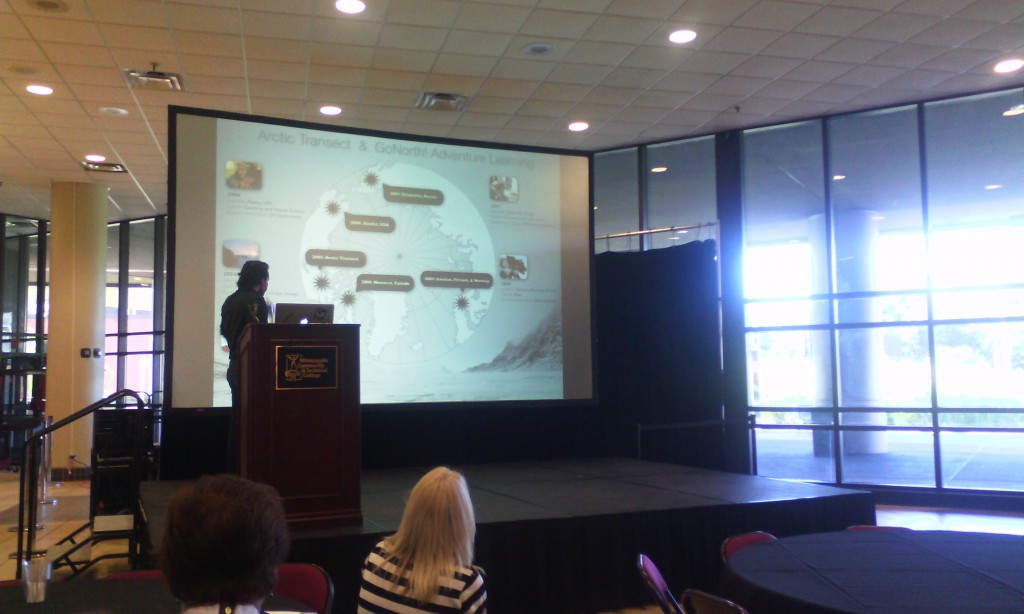
aaron doening
Engagement not completion
Design experience not product
Create change, not simply respond to it
He was a geography teacher : Dimitrina
Experience explore expand. Adventure based how to collaborate in ways we have not collaborated before pedagogical guidelines internet driven
Instructor – content – design
Today: first think is design, content, instructor. So how do we design learning environments is the most important one
Guide learners as designers. Constructivism. Design for meaning. Through the power of the story.
Geotetic design a learning environment learn geography using GIS
Situated movies (student-centered learning)
Grant Earthducation go to the most remote parts of the world to align their education with their culture, instead of what the government is downing as culture
Use of phone: whoever answers instructor’s question first, gets to pose the next question to the rest of the audience.
Design based research
Self-narrative, referencing the experience real world issues in real time
- reference knowledge . knowledge overlap. Technological pedagogical content knowledge.
Geotetic not only how prepare teachers, but desing learning environmwer of the story.
we explore: https://www.we-explore.com/
9.5 design as a learner.
the U Media Lab.
The Changing Earth. App GoX (instagram on steroids. tell their story through the app). How is this different from Google Earth
Raptor Lab (rehabilitate a raptor).
- design experiences
- build trust
- guide learners as designers
- recognize learners as experts
- encourage collaboration
- inspire self narrative
- reference the knowledge domains
- teach for change
- design as learner
adoering@umn.edi chasingseals.com @chasingseals
podcast pontification (audio version of blog self reflections)
Greg Steinke The U
A Digital Story Assignment using WeVideo

WeVideo is the Google response to iMovie cloud
The U is on Google email and thus google drive and all other google tools
The Center for Digital Storytelling. short videos, 3-5 min incorporate photographs with the author narration, reflection
Assignment (verbal directions). process (write a 2 page script, every page is about a minute of video), gather images that support the story; edit the script (rewrite); record audio to the script (use an app on the phone instead of WeVideo), WeVideo can edit the audio recording; edit the story, edit the photos to match the story; YourTube and/or Google+
working with faculty: is the digital story a good fit for your course? two questions: does the course have many writing assignments? does everyone have to do the same type of assignment? do you want to offer choices? do you want your students to share their work outside of the class? to you want to explore opportunities for students to develop 21 century skills?
google communities for sharing
wewideo has a tutorial at Center for Digital Storytelling
students can use the digital story for their eportfolio
the entire exercise is entirely based on mobile devices
time frame: scaffolding options
3d printing products were the tangible result of the project and the digital storytelling just the format to present
Google Drive master folder for the phone images and video; iOS apps: MoviePro, FiLMc Pro, VoiceRecord Pro (including mp3); Android: WeVideo
Storyboard template
Faculty Development Programs: Digital Storytelling Community of Practice
http://it.umn.edu/faculty-development-programs-digital-0
Poster sessions:
Brad Hokanson
http://dha.design.umn.edu/faculty/BHokanson.html
iPAD video kit:

Laurie Conzemius
Critical Thinking

ISTE: http://conference.iste.org/2016/
Joe Lau critical thinking
apps: Popplet blog.popplet.com http://www.popplet.com/ (mindmapping)
into the book: http://reading.ecb.org/
Kahoot – the token system. Polleverywhere https://blog.stcloudstate.edu/ims/2015/05/21/polls-and-surveys-tools-for-education/
Symbaloo https://www.symbaloo.com/home/mix/13eOcK1fiV zotero, easybib, delicious, diigo depending on the grade
youth voices; http://youthvoices.net/ replace social media like teachertube is trying to replace youtube
quandary games in education. https://www.quandarygame.org/ sim city
citizen science alliance http://www.citizensciencealliance.org/
Toontastic https://itunes.apple.com/us/app/toontastic/id404693282?mt=8 now free storytelling
coding and programming: https://www.makewonder.com/robots/dashanddot scratch
Osmo : https://www.playosmo.com/en/ $79.99 + give a set for free Stride principle as a parental involvement
chainlink;
kickword; https://play.google.com/store/apps/details?id=com.makario.wordkick
red herring (four categories) https://play.google.com/store/apps/details?id=com.BlueOxTech.RedHerring&hl=en
http://www.mathplayground.com/logicgames.html
http://www.mathplayground.com/thinkingblocks.html
evaluation:
telestory https://itunes.apple.com/us/app/telestory/id915378506?mt=8
explain everything http://explaineverything.com/
Exploring and Connecting 3D Printing to Teaching and Learning Jason Spartz, Saint Mary’s University of Minnesota
http://pubs.lib.umn.edu/minnesota-elearning-summit/2015/program/23/
http://pubs.lib.umn.edu/cgi/viewcontent.cgi?article=1023&context=minnesota-elearning-summit
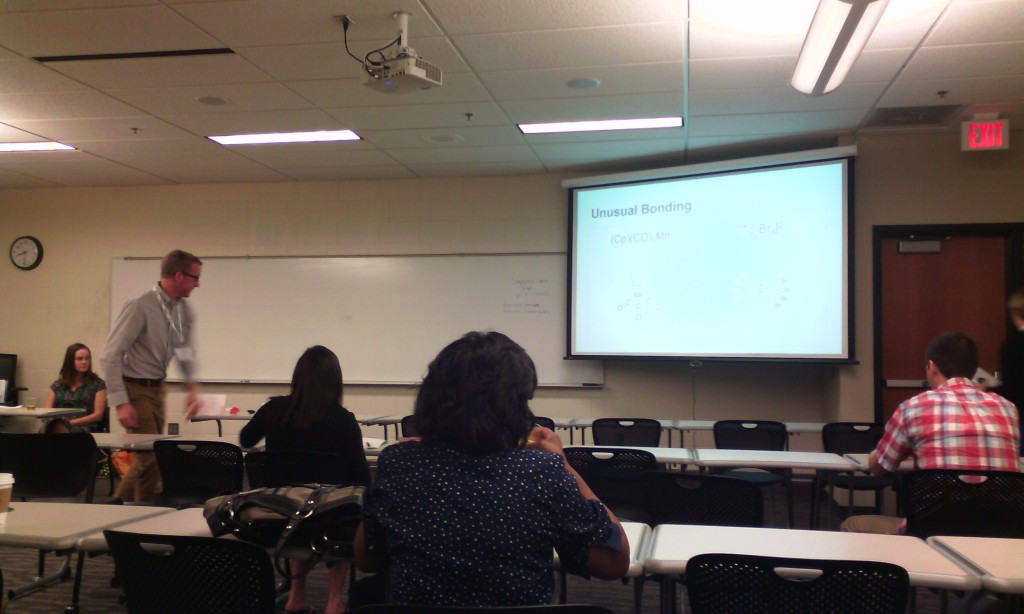
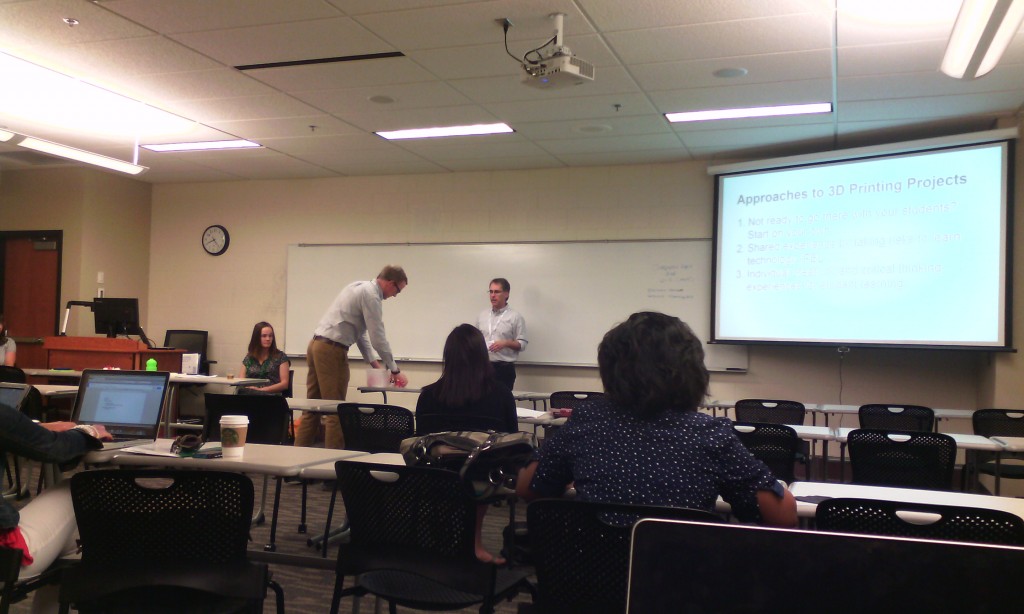
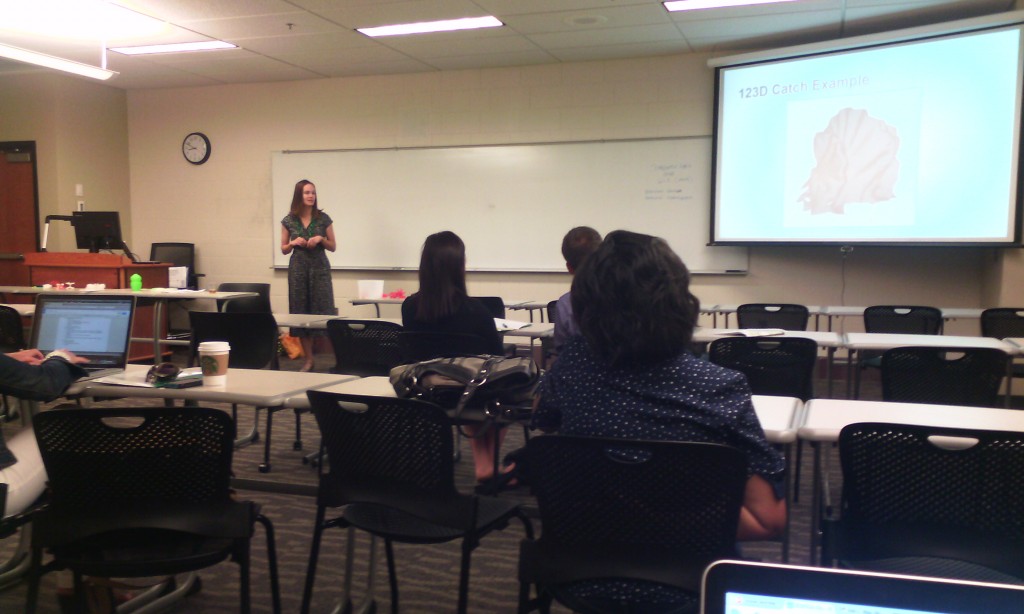
Jason Spartz, Saint Mary’s University of MinnesotaFollow
Lisa Truax, Saint Mary’s University of MinnesotaFollow
Karen Sorvaag, Saint Mary’s University of MinnesotaFollow
Brett Bodsgard, Saint Mary’s University of MinnesotaFollow
chemistry professor. 3D printing with different materials.
what else can be made (e.g. reaction vessel)
printing of atoms
crystalography dbase
Karen: pre-service teachers professor: how to use 3d printers and be comfortable with them. Steve Hoover. Thinkercad and Autodesk123D>
3D academy http://www.team3dacademy.com/index2.html. Pinterest board for3d Printing with resources
Lisa: graphic design. not intuitive. Rhinoceros (not free anymore). 123D strong learning curve. 3d printing will be incorporated in the curriculum. sculpture students and others don’t like fudging on the computer, but Adobe people love it. Some items takes up to 4 hours to print out. when working on the computer is difficult for some students to visualize the dimensionality.
collaborative learning opportunities.
no makerspace or fab lab. additional interest from the theater and business dept. 3d printing is connected to future work skills. new media ecology or media literacy set of skills.
the main presenter: build excitement and interest and gradually step back. how much material goes through and should we charge back. clean and maintenance involved; not too bad. better then a copier. plastic inexpensive. sizes with plastic – $25 and $50. how many project of a spool: depending on the size of the projects but considerable amount. two printers one art dept and one in the faculty dev area.
non profit visually impaired students. how 3d can make difference in special ed.
3d printing lab with access for everybody. ownership brings policy. where housed: neutral place.
only one printer is barely sufficient for faculty to figure out how to use it. purchasing two more if students and curricula to be involved.
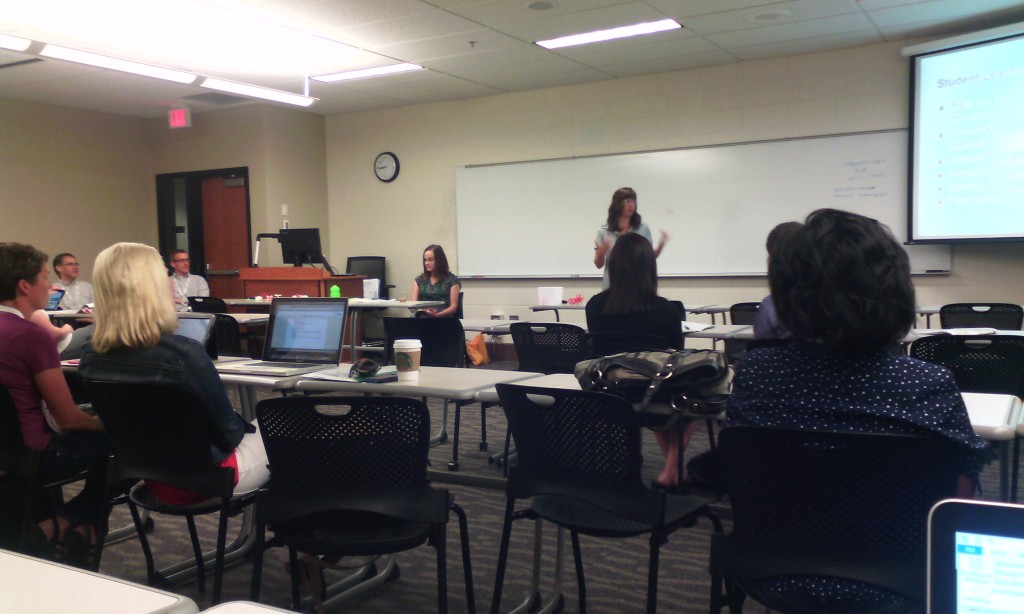



The Balancing Act: Team-Creating an eBook as an Alternative Method for Content Delivery Tom Nechodomu, University of Minnesota

Faculty Created digital stories – google “cultivaitng change series”
student created digital stories –
Susan Andre uses a slide titled “trust” to elucidate how the entire project was enabled. “trust” and “transparency” are sparse currency in the environment I work in. if she is right an ebook ain’t happening anytime soon at my place.
inclining habitat.
students involvement. use stipends. student artists. food for the video interviews. create a community, student centered.
people able to change the book.
copyright process; did you find it cumbersome. copyright permission center.
time span and amount of hours spent: 3-4 months per chapter.
Main speaker
David Wiley. Making Teaching and Learning Awesome with Open
MN Learning Commons
open educational resources
LUMEN
education – sharing feedback, encouragement with students passion about the discipline, yourself
open is not the same as free. free + permissions + copyright permission: 5 r = retain (make and own copies), reuse (use in a wide range of ways), revise (adapt, modify, and improve), remix (combine two or more), redistribute (share with others)
open:
free and unfettered access
perpetual, irrevocable copyright permissions
(look but don’t touch is not open)
tech enables OER permits
traditionally copyright materials on the Internet – not so good ; jet on the road
openly copyright materials on the internet _ yes: jet in the air
permission-less innovation. relatively inexpensive and broad permissions.
intellectual infrastructure of education: learning outcomes/objectives; assessments; textbooks. they are relatively expensive and narrow permissions.
disappearing ink strategies: buyback, rental, ebooks, online subscription
mad, glad, sad, rad: the grumpy cat. student success per dollar
opennetgroup.org/review
change in student learning: replace commercial with open books – small. realign, bigger change. rethink is the large change.
responsibilities:
attribution and meeting other license requirements
thin common cartridge: a way to bring the content to the CMS, but the content remains on the creative commons
disposable assignment: students hate doing them, instructors hate grading them. waste of time and energy
so what?
open education infrastructure: open outcomes, objectives, activities, educational resources
the culture of glued legos must be eradicated. open pedagogy. open credentialing model
summary: don’t settle for “affordable.” improve student outcomes. improve affordability. improve design / academic freedom
links generated from the discussion at my presentation:
> Willard,
>
> The post 29.126 has been niggling at me for days. I originally want to
> reply with a simple observation that the appeal to storytelling is
> cast in such a way to avoid the complications of narration’s relation
> to narrative (the telling and the told; shown and said). But it was
> the theme of “borrowing” from one domain by another that leads me to
> recall a counter-narrative where there is no need to borrow between
> domains since the military-industrial-entertainment complex is one entity.
>
> I contend that fundamental to human interaction is narration:
> attentiveness to how stories are related. Stories are for sorting and
> storing. *Sometimes this soothes paranoia induced by too much
> linearity.*
>
> A while ago (1996), I explored recursivity and narrativity. My
> starting point was the ability to ask questions (and learn from one’s
> bodily reactions). The musings may or may not have military relevance.
> Judge for
> yourselves:
>
> <quote>
>
> Pedagogical situations are sensory. They are also interpersonal.
> Because they are sensory this makes even learning by oneself interpersonal.
> Egocentric speech is like a dialogue between the senses. In
> Vygotsky’s and Luria’s experiments, children placed in problem-solving
> situations that were slightly too difficult for them displayed egocentric speech.
> One could consider these as self-induced metadiscursive moments. The
> self in crisis will disassociate and one’s questionning becomes the
> object of a question.
>
> Not only is the human self as a metabeing both fracturable and
> affiliable in itself, it is also prone to narrativity. That is, the
> human self will project its self-making onto the world in order to
> generate stories from sequences and to break stories into recombinant
> sequences. Its operations on signs are material practices with consequences for world-making.
>
> The fracturable affiliable self calls for reproductive models suitable
> to the interactions of multi-sensate beings, models that render dyads
> dialectical, questionable, answerable. Narrativity understood
> dialectically does not merely mean making sequences or strings of
> events into stories but also stories into things, strung together for
> more stories. From such an understanding, emerge non-dyadic
> narratives of reproduction, narratives where a thing-born transforms
> itself into an event, comes to understand itself as a process.
>
> </quote>
>
> http://homes.chass.utoronto.ca/~lachance/S6D.HTM
>
> Funny to consider that those remarks were based in a consideration of
> language and feedback mechanisms. Make me think that the storytelling
> as “potent form of emotional cueing” may be directed to undesired
> responses such as greater self-reflexivity. And depending on how they
> are parsed, Hollywood films can contribute to undesired responses
> including escape. 🙂
>
> Francois Lachance, Scholar-at-large
> http://www.chass.utoronto.ca/~lachance
>
> to think is often to sort, to store and to shuffle: humble, embodied
> tasks
>
> On Mon, 29 Jun 2015, Humanist Discussion Group wrote:
>
>>
>>
>>
>>
>> Sharon Ghamari-Tabrizi, in “The Convergence of the Pentagon and
>> Hollywood” (Memory Bytes: History, Technology, and Digital Culture, ed.
>> Rabinovitz and Geil, 2004), describes in some detail the adoption by
>> the U.S. military of the entertainment industry’s storytelling
>> techniques implemented by means of simulation. This chapter follows
>> on from her excellent “Simulating the Unthinkable: Gaming Future War
>> in the 1950s and 1960s”, Social Studies of Science 30.2 (2000). In
>> the 2004 piece she describes a U.S. National Research Council
>> workshop in October 1996 at which representatives from film, video
>> game, entertainment and theme-parks came together with those from the
>> Department of Defense, academia and the defense industries. There is
>> much about this convergence that we might productively take an
>> interest in. Let me, however, highlight storytelling in particular.
>>
>> In a military context, Ghamari-Tabrizi points out, skilled
>> storytelling techniques are used to help participants in a VR
>> environment sense that they are in a real environment and behave
>> accordingly. Storytelling functions as a potent form of emotional
>> cueing that would seem to elicit the desired responses. But
>> especially interesting, I think, is the fact that “many conference
>> participants argued that the preferred mode of experiential immersion
>> in electronic media is not the unframed chaos of hypertext, but
>> old-fashioned storytelling.” She quotes Alex Seiden of Industrial
>> Light and Magic (note the date — 1996): “I’ve never seen a CD-ROM
>> that moved me the way a powerful film has. I’ve never visited a Web
>> page with great emotional impact. I contend that linear narrative is
>> the fundamental art form of humankind: the novel, the play, the film… these are the forms that define our cultural experience.”
>>
>> Comments?
>>
>> Yours,
>> WM
>> —
>> Willard McCarty (http://www.mccarty.org.uk/), Professor, Department of
>> Digital Humanities, King’s College London, and Digital Humanities
>> Research Group, University of Western Sydney
Turning Technophobia through Digital Storytelling
http://www.nmc.org/blog/turning-technophobia-through-digital-storytelling/
Gamification and Learning: conference presentations and discussions in June 2015
- Invitation by the Plovdiv University, Bulgaria: plovdiv university invitation to lead a discussion on gamification, June 15, 2015. 2PM local time. Draft of the plan for the discussion:
http://web.stcloudstate.edu/pmiltenoff/conf2015/plovdiv/
- Western Balkan Information Literacy Conference, Bihać Bosnia & Herzegovina June 17-20th 2015. http://www.wbilc2015.kbbi.ba/en/
Link to the paper for the conference: http://web.stcloudstate.edu/pmiltenoff/conf2015/bihac/gaming.pdf
- SOCIO-INT15 – 2nd INTERNATIONAL CONFERENCE ON EDUCATION, SOCIAL SCIENCES AND HUMANITIES 8th, 9th and 10th of June, 2015 – ISTANBUL (TURKEY). http://www.socioint15.org/
http://socioint15.org/files/socioint15_programme10%281%29.pdf
alternative link to the program: http://web.stcloudstate.edu/pmiltenoff/conf2015/istanbul/socioint15_programme.pdf
Link to presentation for the conference:http://www.slideshare.net/aidemoreto/gaming-and-gamification-in-academic-and-library-settings. Short URL: http://scsu.mn/1Rvqao2









